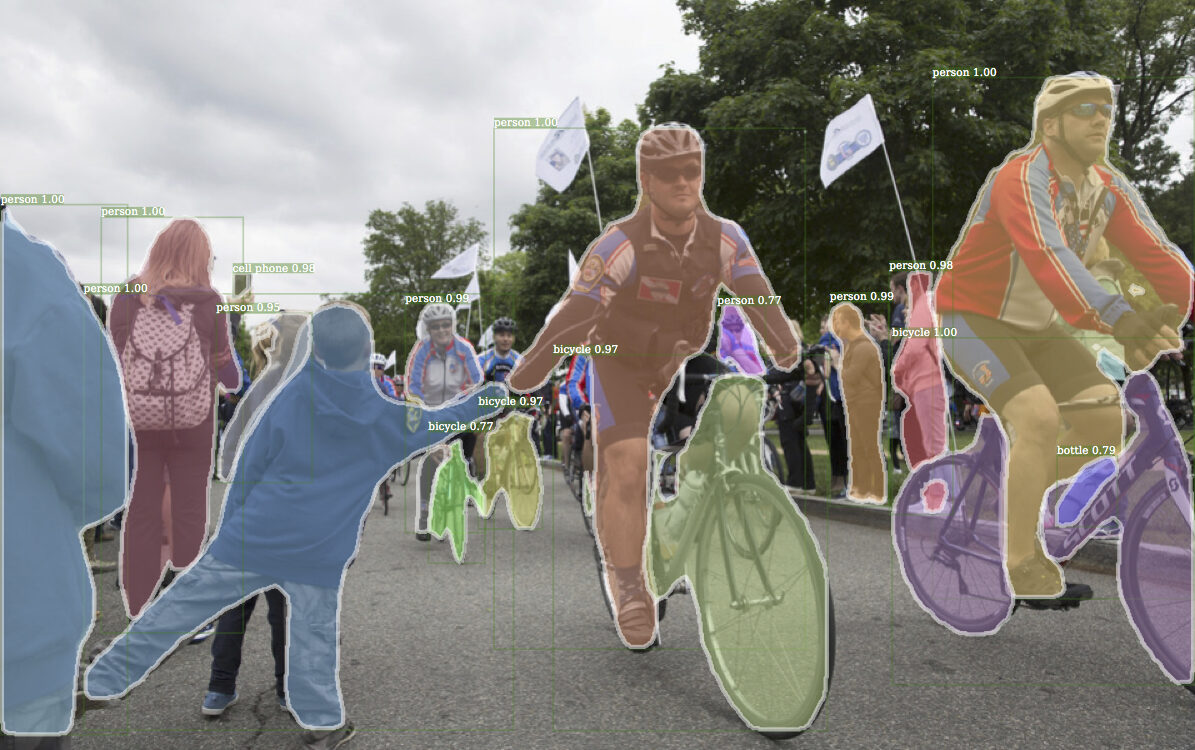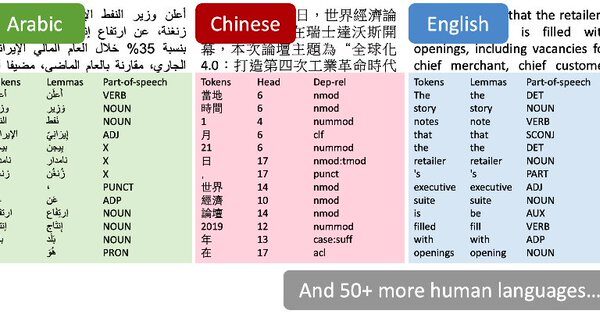Overview
- We present 21 open source tools for machine learning that you may not have come across
- Each open source tool here adds a different aspect to a data scientist's repertoire
- Our focus is primarily on tools for five aspects of machine learning: for non-programmers (Ludwig, Orange, KNIME), model implementation (CoreML, Tensorflow.js), Big Data (Hadoop, Spark), Computer vision(SimpleCV), PNL(StanfordNLP), audio and reinforced learning (OpenAI Gym)
Introduction
I love open source machine learning community. Most of my learning as an aspiring and later as an established data scientist came from open source tools and resources.
If you haven't yet embraced the beauty of open source tools in machine learning, He is missing it! The open source community is huge and has an incredible supportive attitude towards new tools and the adoption of the democratization concept of machine learning..
You should already know popular open source tools like R, Python, jupyter notebooks, etc. But there is a world beyond these popular tools: a place where there are hidden machine learning tools. These are not as eminent as their counterparts, but they can save the life of many machine learning tasks.
In this article, we will see 21 of these open source tools for machine learning. I highly recommend that you take the time to analyze each of the categories I have mentioned.. There is A LOT to learn beyond what we normally learn in courses and videos.
Note that many of these are libraries / Python-based tools because let's face it: Python is as versatile a programming language as we could get!!
We have divided the open source machine learning tools into 5 categories:
- Open source machine learning tools for non-programmers
- Implementation of the machine learning model
- Big Data Open Source Tools
- Computer vision, NLP and audio
- Reinforced learning
1. Open source machine learning tools for non-programmers
Machine learning can seem complex to people with no technical or programming background. It's a vast field and I can imagine how daunting that first step can seem.. Can A Person With No Programming Experience Succeed In Machine Learning?
Well it turns out that you can! Here are some tools that can help you cross the chasm and enter the famous world of machine learning.:
- About Ludwig: Uber's Ludwig is a toolbox built on TensorFlow. Ludwig allows us to train and test deep learning models without the need to write code. All you need to provide is a CSV file containing your data, a list of columns to use as inputs and a list of columns to use as outputs; Ludwig will do the rest. It is very useful for experimentation, as you can build complex models with very little effort and in a short time, and you can modify and play around with it before deciding to implement it in code.
- KNIME: KNIME allows you to create complete data science workflows using a drag and drop interface. Basically, can implement everything, from feature engineering to feature selection and even adding predictive machine learning models to your workflow this way. This approach of visually implementing your entire model workflow is very intuitive and can be really helpful when working on complex problem statements..
- Orange: You don't need to know how to encode to be able to use Orange to extract data, process numbers and obtain information. Can perform tasks ranging from basic visualization to manipulation, transformation and data mining. Orange has become popular lately with students and teachers due to its ease of use and the ability to add multiple plugins to complement its feature set..
There is much more interesting free and open source software that provides great accessibility to do machine learning without typing (much) code.
On the other side of the coin, there are some out-of-the-box paid services you can consider, What Google AutoML, Azure Study, Deep cognition, Y Data robot.
2. Open source machine learning tools for model deployment
Implementing machine learning models is one of the most neglected but important tasks that you need to consider. It will almost certainly come up in interviews, so you may be well versed on the subject.
Here are some frameworks that can make it easy to implement that favorite project on a real world device.
- MLFlow: MLFlow is designed to work with any machine learning algorithm or library and manage the entire lifecycle, including experimentation, reproducibility and implementation of machine learning models. MLFlow is currently in alpha and has 3 components: follow-up, projects and models.
- CoreML de Apple: CoreML is a popular framework that can be used to integrate machine learning models into your iOS application. / Apple Watch / Apple TV / MacOS. The best part about CoreML is that it doesn't require extensive knowledge of neural networks or machine learning. A win-win!
- TensorFlow Lite: TensorFlow Lite is a set of tools to help developers run TensorFlow models on mobile devices (Android e iOS), integrated and IoT. It is designed to make it easy to perform machine learning on devices, “on the border” of the network, instead of sending and receiving data from a server.
- TensorFlow.js – TensorFlow.js may be your preferred option for implementing your machine learning model on the web. It is an open source library that allows you to create and train machine learning models in your browser.. It is available with GPU acceleration and also automatically supports WebGL. You can import existing pre-trained models and also retrain existing full machine learning models in the browser itself!!
3. Open Source Machine Learning Tools for Big Data
Big Data is a field that deals with the ways of analyzing, systematically extract information or, else, dealing with data sets that are too large or complex to be handled by traditional data processing application software. Imagine processing millions of tweets in one day for sentiment analysis. This feels like a huge task., It is not like this?
Do not worry! Then, Some tools are included that can help you work with Big Data.
- Hadoop: One of the most prominent and relevant tools for working with Big Data is the Hadoop project. Hadoop is a framework that enables distributed processing of large data sets across groups of computers using simple programming models.. It is designed to scale from single servers to thousands of machines, each of which offers local compute and storage.
- Spark – spark: Apache Spark is considered a natural successor to Hadoop for big data applications. The key point of this open source big data tool is that it fills in the gaps in Apache Hadoop regarding data processing. curiously, Spark can handle both batch data and real-time data.
- Neo4j: Hadoop may not be a good choice for all big data problems. For instance, when you need to deal with a large volume of network data or graphics related problems, such as social media or demographic patterns, a graphics database may be the perfect choice.
4. Open source machine learning tools for machine vision, NLP and audio
“If we want machines to think, we must teach them to see”.
– Dr. Fei-Fei Li on Machine Vision
- SimpleCV: You must have used OpenCV if you have worked on any computer vision projects. But, Have you ever come across SimpleCV? SimpleCV gives you access to several high-powered computer vision libraries, as OpenCV, without having to learn about bit depths first, file formats, color spaces, buffer management, eigenvalues or array storage versus bitmap. This is simplified computer vision.
- Tesseract OCR: Have you used creative apps that allow you to scan documents or purchase invoices using your smartphone camera or deposit money into your bank account simply by taking a photo of a check? All of these applications use what we call OCR or Optical Character Recognition software.. Tesseract is one of those OCR engines that has the ability to recognize more of 100 Languages Outside the Box. You can also be taught to recognize other languages.
- Detectron: Detectron is Facebook AI Research's software system that implements state-of-the-art object detection algorithms, including Máscara R-CNN. It is written in Python and works with Caffe2 deep learning framework.
- StanfordNLP: StanfordNLP is a Python natural language parsing package. The best part about this library is that it supports more than 70 human languages! Contains tools that can be used in a pipeline to
- Convert a String Containing Human Language Text to Sentence and Word Lists
- Generate base forms of those words, its parts of speech and morphological characteristics, Y
- Give a syntactic structure dependency analysis
- BERT as a service: All NLP enthusiasts will have heard of BERT by now, Google's innovative NLP architecture, but they probably haven't come across this project as useful. Bert-as-a-service uses BERT as a sentence encoder and hosts it as a service through ZeroMQ, allowing you to map sentences to fixed-length representations in just two lines of code.
- Google Magenta: This library provides utilities to manipulate source data (mainly music and images), use this data to train machine learning models and, Finally, generate new content from these models.
- Book: LibROSA is a Python package for audio and music analysis. Provides the basic components necessary to create music information retrieval systems. It is widely used in preprocessing audio signals when working on applications such as voice-to-text conversion with deep learning., etc.
Open source tools for reinforcement learning
RL is the new talk of the town when it comes to Machine Learning. The goal of reinforcement learning (RL) is to train intelligent agents who can interact with their environment and solve complex tasks, with real world applications to robotics, autonomous cars and more.
Rapid progress in this field has been fueled by having agents play games like the iconic Atari console games., the ancient game of Go, or professionally played video games like Dota 2 o Starcraft 2, all of which provide challenging environments where new algorithms and ideas can be quickly tested in a safe and reproducible way. These are some of the most useful training environments for RL:
- Google Research Football: Google Research Football Environment is a novel RL environment where agents aim to dominate the world's most popular sport: football. This environment gives you a great deal of control to train your RL agents, watch the video to know more:
- OpenAI Gym: Gym is a set of tools for developing and comparing reinforcement learning algorithms. Supports teaching agents around, from walking to playing games like Pong or Pinball. In the following gif, you will see an agent who is learning to walk.
- Unity AA Agents: The Unity Machine Learning Agent Toolkit (ML-Agents) is an open source Unity plugin that enables games and simulations to serve as environments for training intelligent agents. Agents can be trained through reinforcement learning, learning by imitation, neuroevolution or other machine learning methods via an easy-to-use Python API.
- Malmo Project: The Malmo platform is a sophisticated artificial intelligence experimentation platform built on top of Minecraft and designed to support fundamental research in artificial intelligence.. It is developed by Microsoft.
Final notes
As must have been evident from the previous toolset, open source is the way to go when we consider data science and artificial intelligence related projects. I probably just scraped the tip of the iceberg, But there are numerous tools available for a variety of tasks that make your life as a data scientist easier., you just need to know where to look.
In this article, we have covered 5 cool areas of data science no one talks much about no-code ML, ML implementation, Big data, Vision / NLP / Sound and Reinforcement learning. Personally, I think that you are 5 areas have the greatest impact when the real value of AI is taken into account.
What are the tools you think should have been on this list? Write your favorites below to let the community know!!


















